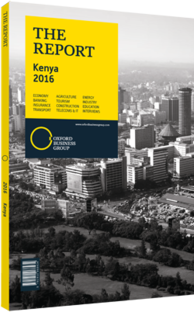PPPs key for project development in Kenya
The country has a huge need to develop infrastructure and provide services, and the government acknowledges that it cannot succeed alone. Gabriel Negatu, the African Development Bank’s (AfDB) regional director for East Africa, told OBG that Kenya had a KSh206.7bn ($2.3bn) gap to fill in financing infrastructure for which the private sector will be needed. The government is therefore adopting a PPP model and encouraging more private firms to help finance, build and operate projects.
Cabinet Secretary for the National Treasury Henry Rotich, in his June 2015 budget speech, outlined several examples of PPP projects, such as “the development of 10,000 km of roads using the annuity approach; the generation of 5000 MW of electricity; the construction of university hostels; the development of a seaport in Kisumu; the expansion of the Mombasa-Nairobi-Malaba Highway; [and] the construction of the second Nyali Bridge in Mombasa, among others”. According to Rotich, the government feels the private sector can play an important role in mobilising resources for infrastructure development and is using the PPP arrangement to accelerate infrastructure development and create jobs.
Regulations
Kenya passed the PPP Act of 2013 and more guidelines are being prepared to cover county government PPP rules and regulations for a revolving PPP project facilitation fund to support preparing, appraising and tendering projects. The PPP Unit, which is part of the Treasury, has a pipeline of 71 projects as of August 2015 that includes: housing and student hostels; health care facilities; agriculture initiatives; transport infrastructure; Port of Mombasa development and a second container terminal; commuter rail services; operation and maintenance of the Jomo Kenyatta International Airport; key roads; power plants, including coal, wind, solar and geothermal; solid waste management and water supply; irrigation; sugar projects; a hotel; and a special economic zone.
Apurva Sanghi, the World Bank’s lead economist and programme leader for Eritrea, Kenya, Rwanda and Uganda, told OBG, “The track record is still to be developed. We have the framework and we are now moving to implementation.” In addition, David Baxter, executive director at the Institute for PPPs, told OBG that work was needed to build the capacity of the PPP Unit, as well as skills for other ministries, departments and agencies that will work with the Treasury to ensure that PPP projects are feasible, sustainable and meet the expectations of value for money.
New Projects
Movement is beginning to pick up. Tenders were received for extracting coal in Kitui County and the construction of a coal-fired power generation plant in Lamu, where a consortium between East Africa’s Centum Investment and Oman’s Gulf Energy won a $2bn tender in 2015 to build a nearly 1000-MW coal-fired plant. An award was also given in late 2014 to a consortium to build and rent hostel rooms for 10,000 students at Kenyatta University. Other universities are set to copy this example and more investors are keen to follow.
Financing
There is still a need for some fine-tuning for new projects, however. Kamanda Morara, equity analyst at Ashanti Advisory, told OBG that often projects require a bank, consortium and the government to work together. “In some cases, the scale of the project is too huge for local companies and banks alone,” Morara said, adding that firms from China, India, Australia, Italy, among other countries, had gotten involved and that international companies can bring experience to complement a local firm.
Toll roads are coming in 2017, Kefa Seda, manager of special projects for the Kenya National Highways Authority, told OBG. Four roads have been identified: the 490-km Nairobi to Mombasa road; the 180-km Nairobi-Nakuru highway; Nairobi Southern Bypass; and Thika superhighway, where users will be charged according to how long they drive along the road.
You have reached the limit of premium articles you can view for free.
Choose from the options below to purchase print or digital editions of our Reports. You can also purchase a website subscription giving you unlimited access to all of our Reports online for 12 months.
If you have already purchased this Report or have a website subscription, please login to continue.

